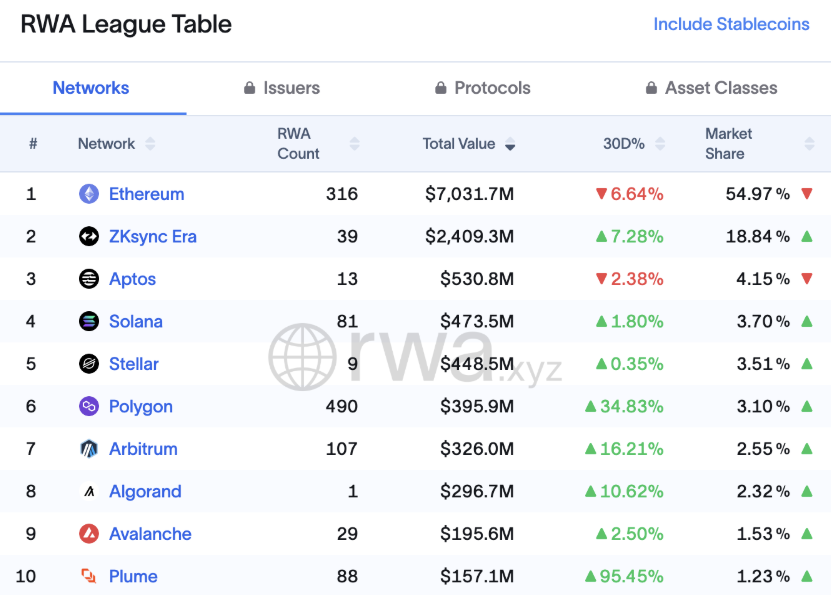 |
| By Marija Matic |
We’re entering the “invisible crypto” era.
That is, more and more, users interact with blockchain-powered apps without even realizing it.
Robinhood (HOOD), for example, is quietly tokenizing stocks for EU customers.
Coinbase (COIN) is bringing millions of Americans into web3.
And it’s all done without users needing to know they’re using blockchain technology.
Among the many networks fueling this change, two Ethereum (ETH, “A-”)-based Layer-2s stand out as leaders shaping the future: Arbitrum (ARB, “C”) and Coinbase’s Base.
Though both build on the same foundation, they each offer a different vision for what’s next in web3.
Two Chains, Two Visions
At first glance, Base looks like the early winner.
Coinbase integrated DEXs into the app and backend in June. By embedding DEX access into the main app, Coinbase effectively brought DeFi to mainstream users …
All without requiring them to know what DeFi is.
Thanks to that distribution, Base is pulling massive usage:
- 878,000 daily active users
- 260 million transactions in the past month
For Coinbase users, interacting with Base feels like using a regular mobile app, not blockchain tech. Which makes Base one of the easiest entry points into web3 for everyday Americans.
Arbitrum, by comparison, has fewer daily users (about 335,000). But the total value secured by its network is huge — over $18 billion at the time of writing.

That’s roughly 40% of all Layer-2 capital!
This shows Arbitrum’s deep economic footprint, despite the fact that it trails Base in transaction volume.
But that may change soon.
Real World Assets: Arbitrum’s Quiet Advantage
One of the most promising L2 use cases is real-world assets (RWAs).
That’s the tokenization of things like stocks, bonds and real estate. And in this hot sector, Arbitrum is quietly taking the lead.
Related story: Unlock Trillions with Real-World Assets
RWAs on Arbitrum have hit a TVL — that is, total value locked —of $326 million excluding stablecoins.
It mostly consists of tokenized U.S. Treasury debt and non-U.S. government debt. But it well overshadows Base's $75 million of tokenized assets.
And it’s fast growing, up over16% in just the past month!
This growth puts Arbitrum in the top 10 blockchains by RWA value.
Robinhood’s interest in this space is no coincidence.
Tokenizing financial products requires precise control, custom compliance and robust infrastructure.
All things Arbitrum are well-positioned to provide.

Why Robinhood Chose Arbitrum
In fact, Robinhood noticed Arbitrum’s advantage.
A month ago, Robinhood decided to build on Arbitrum’s technology — rather than Base — as a strategic move.
Because building on Base’s tech would mean being another player in the large Superchain ecosystem.
The Superchain is a family of Layer-2 chains built on the same technology stack (called the OP Stack) that work closely together.
This includes Base, as well as …
- Ink, the blockchain Kraken is built on,
- Unichain, which is where you’ll find Uniswap (UNI, “C+”),
- Soneium, Sony’s blockchain, and
- World Chain, which is home to Worldcoin (WLD, “D-”).
These blockchains share governance, security and user experience to create a smooth, seamless ecosystem.
This approach makes it easy for users and developers to move between chains by reducing friction and enabling smooth cross-chain experiences.
But the trade-off is individuality.
So instead, Robinhood saw more value in becoming a leading figure within Arbitrum’s ecosystem.
Because using Arbitrum comes with some nice benefits, like …
- Lower costs: Arbitrum takes about 10% of transaction profits (sequencer fees), compared to 15% on the tech behind Base. For a platform handling high volumes, that difference quickly adds up.
- Better developer fit: Arbitrum supports programming in a language Robinhood’s engineers prefer and know well, making development smoother and faster.
- Governance and safety: Arbitrum’s decentralized governance aligns with Robinhood’s emphasis on security and reliability.
Robinhood’s likely goal is to maintain strong, Apple-like control over its system while benefiting from a robust, decentralized foundation. Which makes Arbitrum a better fit.
Robinhood has already started to tokenize stocks and other products directly on Arbitrum. But the longer-term plan is to launch a dedicated “Robinhood Chain” built on Arbitrum’s technology.
This would allow it to eventually eliminate fees for users entirely.
By embracing DeFi, Robinhood gains significant advantages, like access to markets that never close and innovative financial products like perpetual contracts.
Not to mention the ability to expand more easily into global markets.
Meanwhile, users get a seamless experience where they don't even need to know what tokenization means.
Two Competing Visions for Ethereum’s Future
Why should you care about which blockchain Robinhood chooses to build on?
Because it’s a microcosm of a broader fork in Ethereum’s L2 roadmap.
And getting exposure to the path that’ll become the one more traveled could offer an intriguing opportunity for investors.
One path leads us to the Superchain. The other takes us to Arbitrum Orbit.
The Superchain: More Operability, Less Individuality
As I explained above, projects on the Superchain make a calculated decision to give up some freedom in how they design or govern their chains in exchange for interoperability and ease of use.
Still, the Superchain currently accounts for the majorityof Ethereum Layer-2 transactions.
Its appeal of seamless onboarding, shared tooling and cross-chain interoperability is ideal for consumer apps like wallets.
Arbitrum Orbit: More Individuality, Less Operability
Arbitrum’s tech offers the exact opposite. It emphasizes independence.
Its framework allows anyone to launch their own L2 with full sovereignty. All while still relying on Ethereum for security.
This makes it especially appealing to companies that want end-to-end customization.
Whether that means designing unique governance mechanisms, implementing custom features or isolating their chain for regulatory or business reasons. Arbitrum Orbit chains can operate independently without conforming to a centralized roadmap.
That flexibility makes Arbitrum Orbit especially attractive to institutions and finance-focused projects that demand tailored compliance, performance or data privacy setups.
In short, what it lacks in built-in interoperability, it makes up for in architectural freedom.
But it may not be fair of me to frame this as a choice between just two options.
Because there are numerous L2 ecosystems out there.
Take, for example …
BNB Chain: A Third Model
Think of Ethereum’s Layer-2 solutions like two types of neighborhoods.
The first, where the Superchain lives, is a close-knit community. Everyone shares the same backyard and can easily visit each other.
The other, which is where we find Arbitrum, is a community of independent houses. Each project builds its own unique home, but still relies on the same city infrastructure.
BNB Chain is taking a different approach entirely. Instead of many smaller chains that either stand independent or form a closer community, it’s building a giant skyscraper.
In short, it’s a single, powerful network designed to handle everything under one roof.
And that network will be upgraded with Ethereum tech for speed, privacy and regulatory compliance.
In fact, this skyscraper aims to process up to 5,000 decentralized trades per second, making it incredibly fast.
Unlike the Superchain’s connected family or Arbitrum’s independent houses, BNB Chain is a fully managed building. Everything from the foundation to the top floor is controlled by a core team that manages the entire platform.
It may be less flexible, but it’s being designed to deliver a smooth, reliable experience with top-level DeFi performance.
This makes it especially suited for high-frequency trading and compliant, privacy-enabled financial services.
Since this announcement, the BNB token has reached record highs, reflecting strong market sentiment.
Conclusion: No Single Winner. Just a Bigger Pie
The future of finance isn’t a winner-take-all scenario.
Each model addresses different priorities. And that makes each approach valid.
Together, they’re making blockchain more scalable, more adaptable and more invisible to the average user.
But one asset poised to benefit from all this development is Ethereum itself.
As the scaling landscape matures, Ethereum is becoming the common ground: a foundation for a multi-layered, multi-model ecosystem that most users won’t even realize they’re interacting with.
Consider it the “shovels” pick of this digital gold rush.
Best,
Marija Matić

